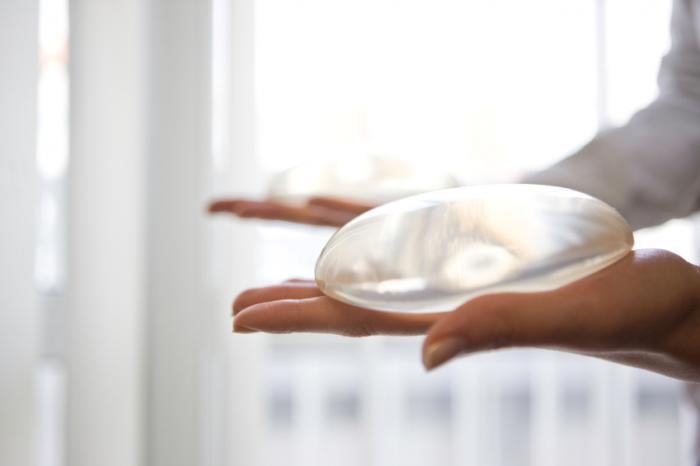Breast Augmentation Or Enlargement Surgery
Breast Augmentation Surgery In Raipur
Breast Augmentation Surgery Overview
Breast augmentation also known as augmentation mammoplasty is surgery to increase breast size. It involves placing breast implants under breast tissue or chest muscles. For some women, breast augmentation is a way to feel more confident. For others, it's part of rebuilding the breast for various conditions. Dr. Yatindra Dewangan Is a more experienced plastic surgeon and he has done many Breast Augmentation surgeries in the last 12 Years.
Welcomr to our
DrY Cosmetic Plastic Surgery & Hair Transplant Center
A breast implant is a medical prosthesis that is placed inside the breast to augment, reconstruct, or create the physical form of the breast. If you're considering breast augmentation, talk to a plastic surgeon. Make sure you understand what surgery involves, including possible risks, complications and follow-up care.
Why opt for breast augmentation?
Breast augmentation is done to:
- Enlarge breasts that are naturally small
- Restore breast size and shape after pregnancy, weight loss or breastfeeding
- Restore symmetry when the breasts are asymmetrical
- Restore the breast or breasts after surgery
Plastic surgery includes reconstructive surgery and cosmetic surgery.
Reconstructive breast surgery may be done as a part of the treatment for breast cancer. Cosmetic breast surgery is done for esthetic purposes. Breast augmentation is normally cosmetic surgery.
What are breast implants?

A breast implant is a medical prosthesis that is placed inside the breast to augment, reconstruct, or create the physical form of the breast.
There are three main types of breast implants:
Saline implants are filled with a sterile saline solution, like salt water. The solution is held within an elastomer silicone shell. These implants can be filled with different amounts of saline solution. This affects the feel, firmness, and shape of the breast.
If a saline implant leaks, the solution will be absorbed and expelled by the body naturally.
Silicone gel-filled implants consist of a silicone outer shell filled with a silicone gel. If a silicone-filled implant leaks, the gel will either stay in the shell or escape into the breast implant pocket. A leaking silicone-filled implant may or may not collapse.
Patients choosing this type of implant should carry out more regular checks with their doctor compared with those on saline solution implants. An MRI or ultrasound scan can check the condition of the implants.
Alternative composite implants may be filled with polypropylene string, soy oil, or some other material.
What To Expect?
Breast augmentation is a type of surgery, so patients need to think carefully before opting for the procedure. Before surgery, the surgeon should help the patient choose the size of the implant needed. This may be done by putting different-sized implants into a bra, to see how they feel. A general anesthetic is normally used so that the patient is asleep during surgery. Sometimes a local anesthetic is used, and the patient is awake.
Incision options
The surgeon and patient should discuss incision options.
The following options are possible:
- Inframammary incision, done in the crease under the breast
- Transaxillary incision, in the armpit
- Periareolar incision, around the nipple
The choice of incision depends on several factors, including how much enlargement is involved, the patient’s anatomy, the type of implant, and surgeon-patient preference.
Inserting and placing implant
The breast implant is inserted into a pocket.
There are two types of placement:
A submuscular placement goes under the pectoral muscle. Recovery may take longer, and there may be more pain after the operation.
A submammary, or subglandular, placement goes behind the breast tissue, over the pectoral muscle.
Closing the incisions
The surgeon closes the incisions with layered sutures, or stitches, in the breast tissue. Stitches, skin adhesives, and surgical tape close the skin and keep it closed. At first, the incision lines will be visible, but these will fade with time.
Assessing the results
Surgery will leave some swelling, but this should resolve within two weeks. The incision lines will also fade. After this, the patient will be able to decide whether the procedure met her expectations.
Recovery
As the anesthetic wears off, the patient will be given painkillers to relieve the pain. After general anesthesia, the patient will not be able to drive. They should arrange for a friend to take them home. Absorbable, or dissolvable, sutures usually disappear within 6 weeks.
If the patient has sutures that do not dissolve, or if drainage tubes are placed near the breasts, a follow-up appointment will be necessary to remove them.
The medical team should provide the following information:
- How to care for the breasts after the procedure
- How to use the prescribed medications
- When to attend a follow-up visit
- When to call the doctor
The patient should seek medical help immediately if they experience:
- Any sign of infection, such as fever, or warmth and redness in the breast area
- Chest pains, unusual heartbeats, or shortness of breath
The patient should not engage in strenuous physical activities for about 6 weeks.
The doctor may advise about some post-operative exercises, such as flexing and moving the arms, to relieve pain and discomfort, and also what type of bra to wear.
Risks and complications
Every surgical procedure has risks.
Among patients who undergo breast reconstruction, 46 percent of women with silicone gel implants and 21 percent of those with saline implants had at least one additional operation within 3 years.
Eight percent of women with saline implants and 25 percent of those with silicone implants had surgery to remove the devices.
Nearly 50 percent of those having cosmetic breast augmentation experience some kind of complication, for example, pain, hardening, infection, or the need for additional surgery.
Some of the risks and complications associated with breast augmentation are:
- Painful breasts
- Infection
- Sensation in the breast, the nipples, or both, may change temporarily
- Rupturing or leaking of the implant
- Bleeding
- Fluid accumulation
Capsular contracture refers to a hardening of the area around the implant. It can distort the shape of the implant, and it can cause pain.
The scars may become red, thick, and painful. Sometimes they require further surgery.
